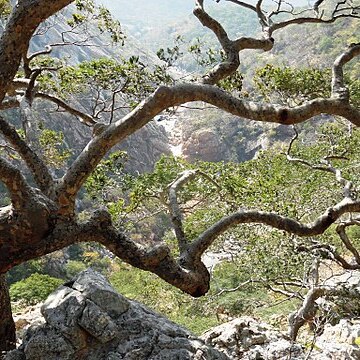Trees, shrubs or suffrutices producing annual shoots from a woody rootstock, 0.25–45 m tall, sometimes low-branching; trunk sometimes buttressed to 1.5 m high; bark deeply to shallowly fissured longitudinally and coarsely reticulate, or smooth, flaking in irregular to rectangular, thick or thin scales.
Inflorescences of terminal and/or axillary panicles or racemes up to 150 mm long; bracts 2–6 × 1–5 mm. Flowers 3–15 × 2–10 mm; bracteoles 4–20 × 2–12 mm; perianth comprising greatly reduced sepals and rudimentary petals, or petals lacking altogether.
Stipules intrapetiolar, free, shortly connate at base or partially to fully fused; persistent to early-caducous; lamina 2–45 × 0.2–10 mm; auricles 1–35 × 0.5–15 mm if present, lateral or basal, persistent or caducous independently of the stipules.
Leaves paripinnate, 15–350 mm long; petioles 2–70 mm long including a 2–8 mm long pulvinus; rachis deeply or shallowly canaliculate above; leaflets in 2–72 pairs, sessile or with petiolules 3–7 mm long.
Pods 45–300 × 15–80 mm, oblong to obovate, ventral flanges suberect, spreading, revolute or absent, epicarp smooth, endocarp dull to reddish brown, spongy around the seeds.
Hypanthium present, shortly cupular or cylindrical at the base, turbinate above, up to 1.5 mm from base to point of insertion of sepals.
Stamens 10–18(20), connate at base for 0.5–7 mm, clearly exserted above the bracteoles, anthers dorsifixed.
Sepals 0–8, 1–8 × 0.5–3 mm, imbricate, valvate or widely spaced.
Axillary dormant buds ovoid to globose or much flattened.
Seeds up to 11 per pod, 12–30 × 10–25 mm, much flattened.
Ovary 2–10 × 1.5–3 mm, stipitate, stipe 1.5–5 mm long.
Petals rudimentary, 0–6, 0.3–7 × 0.2–1.5, filiform.
